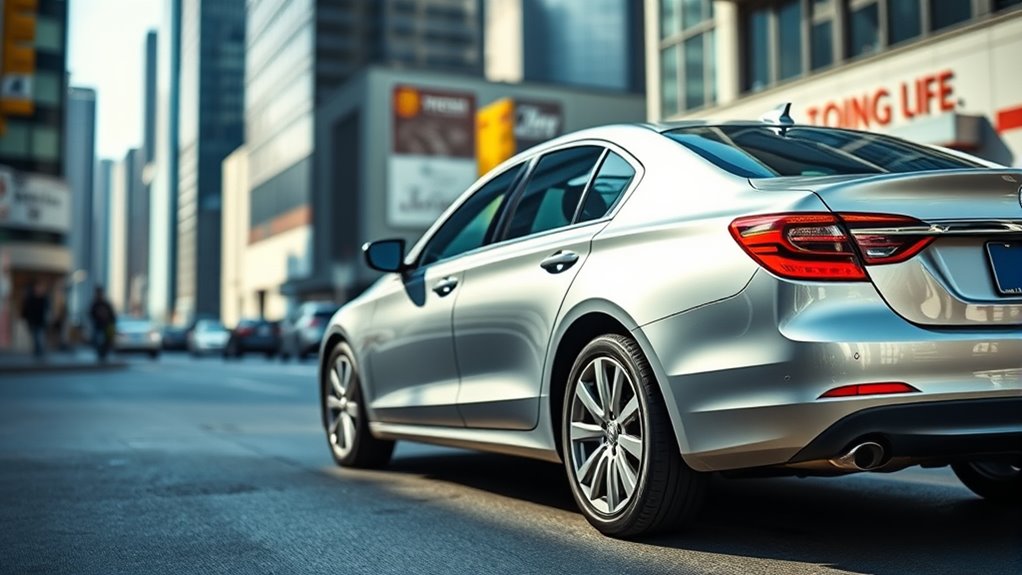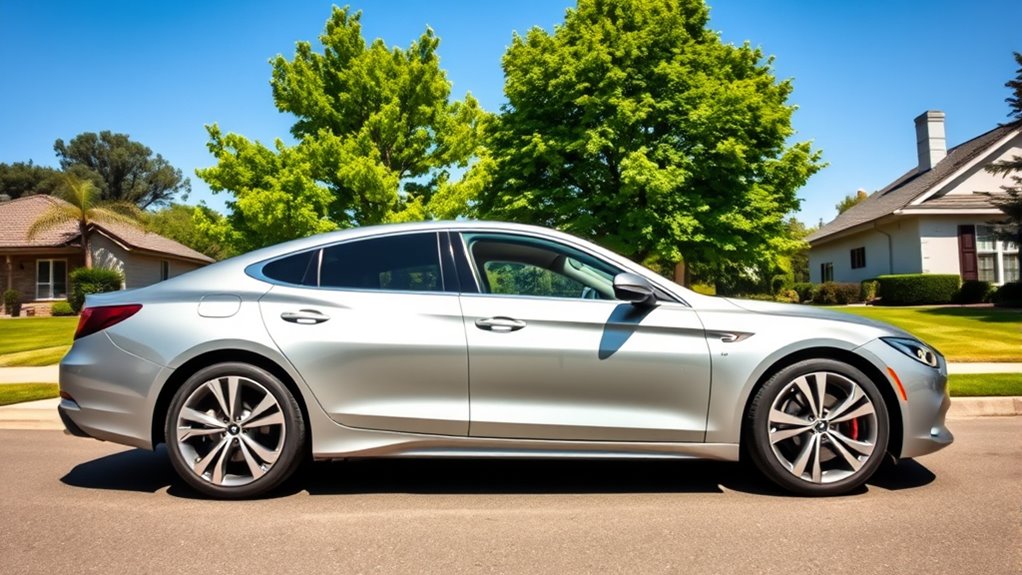If you drive over 20,000 miles annually, high-mileage lease options are ideal for you. These leases give you the flexibility to exceed standard mileage limits without facing hefty penalties. They often have higher upfront or monthly costs but help you manage expenses and avoid surprise fees at the end. Plus, they’re especially beneficial for electric vehicles and frequent travelers. To find the best plan that fits your needs, explore the details further.
Key Takeaways
- High-mileage leases are designed for drivers exceeding 20,000 miles annually, offering more flexibility than standard leases.
- These leases typically involve higher monthly payments or upfront costs to cover additional miles.
- They are ideal for frequent drivers like commuters, salespeople, or long-distance travelers, reducing penalty risks.
- Many providers customize lease terms for high-mileage needs, including EV-specific options with lower maintenance costs.
- Understanding lease terms and potential penalties helps manage mileage and avoid unexpected charges at lease end.

Are high-mileage leases a smart choice for drivers who log a lot of miles each year? If you’re someone who regularly drives over 20,000 miles annually, standard lease agreements might not be the best fit. Traditional leases often come with mileage limits of around 10,000 to 15,000 miles per year, and exceeding those limits can lead to hefty penalties when it’s time to return the vehicle. That’s where high-mileage leases come into play, offering more flexibility for drivers like you who need to put on the miles without worrying about costly fees. These leases typically allow for 20,000 miles or more annually, making them a practical solution for commuters, traveling salespeople, or anyone with a long daily drive.
One major advantage of opting for a high-mileage lease is the ability to avoid the financial surprises that come with exceeding mileage limits. Instead of paying per mile at lease-end, you pay a higher upfront or monthly fee that covers the additional miles. This setup helps you plan your budget better and prevents unexpected charges. If you’re considering electric vehicles, high-mileage leases can be particularly appealing. EVs often have lower maintenance costs and are increasingly popular among eco-conscious drivers, but their lease terms might be less flexible when it comes to high mileage. Choosing a high-mileage lease for an electric vehicle ensures you won’t face penalties if your driving habits involve frequent long trips. Additionally, some lease providers offer customized lease options designed specifically for high-mileage drivers, which can include tailored terms and benefits.
When it’s time to end your lease, understanding the lease termination process is pivotal, especially if your driving patterns change unexpectedly. If you reach the mileage cap before your lease term ends, you have a few options. You could opt for a lease extension, buy the vehicle outright, or simply terminate the lease early—though the latter might involve extra fees or penalties. It’s important to review the lease agreement carefully because some contracts include clauses related to lease termination, including potential charges for early termination or excess mileage. Being aware of these details helps you avoid surprises and ensures you can transition smoothly to a new vehicle or ownership.
Frequently Asked Questions
Are High-Mileage Lease Options Available for Electric Vehicles?
Yes, high-mileage lease options are available for electric vehicles, often up to 20,000 miles or more annually. You should consider how battery degradation might impact your lease, especially with frequent charging. Make sure the lease includes good charging infrastructure access, so you can keep your EV charged without worry. Discuss these details with your dealer to find a plan that fits your high-mileage driving needs.
How Do Maintenance Costs Differ on High-Mileage Leases?
On high-mileage leases, maintenance costs tend to be higher because you experience more wear and tear on the vehicle. You might face increased charges for excess wear and tear, and depreciation costs can accelerate due to the additional miles driven. Regular maintenance is essential to minimize these costs, but overall, expect to pay more for upkeep compared to standard leases, especially with electric vehicles that have unique components.
Can High-Mileage Leases Be Customized for Specific Driving Needs?
Think of your lease as a tailor-made suit—designed to fit your driving habits perfectly. Yes, high-mileage leases can be customized with custom lease terms and mileage flexibility, so you won’t feel squeezed by limits. You can negotiate for more miles upfront, ensuring your lease matches your lifestyle. This way, your lease adapts to your needs, giving you the freedom to hit the road without worry.
What Are the Penalties for Exceeding Mileage Limits?
If you exceed your mileage limit, you’ll face penalty fees for excess mileage, which can add up quickly. The lease agreement typically specifies a per-mile charge, often around 15 to 25 cents per mile. To avoid surprises, track your miles closely and consider purchasing extra miles upfront if you anticipate exceeding your limit. Staying within your agreed mileage helps you avoid costly penalties and keeps your lease smooth.
Do High-Mileage Leases Impact Vehicle Warranty Coverage?
High-mileage leases can impact your warranty coverage because lease restrictions often include mileage limits, and exceeding them might lead to additional charges or reduced coverage for certain repairs. While the manufacturer’s warranty generally stays the same, exceeding mileage limits could complicate warranty claims if wear and tear are attributed to high usage. Always check your lease agreement to understand how mileage might affect your warranty coverage and avoid unexpected costs.
Conclusion
If you drive over 20,000 miles annually, high-mileage leases can be a smart choice, often providing better value than traditional leases. Did you know that the average American drives about 13,500 miles a year? That means if you’re exceeding that, a high-mileage lease could save you money and hassle. Just make sure to carefully review the terms and mileage penalties. With the right lease, you’ll stay on the road without breaking the bank.










